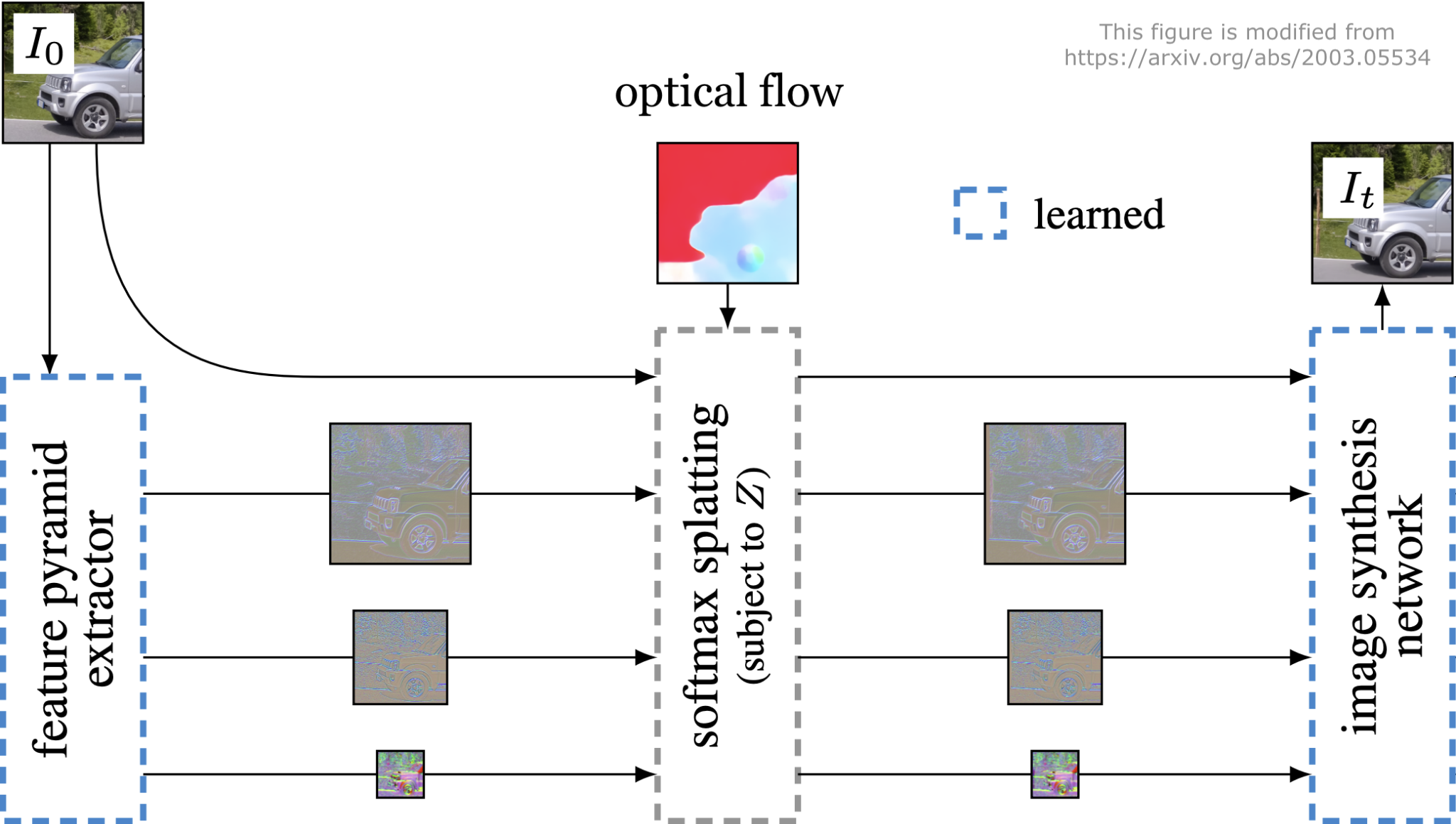An implementation of the diffusion model that generates oscillatory motion for an input image introduced in Generative Image Dynamics [1] and a model that animates the image with the generated motion based on softmax splatting [2].
- [1] Zhengqi Li, Richard Tucker, Noah Snavely, and Aleksander Holynski. Generative image dynamics. In Proceedings of the IEEE/CVF Conference on Computer Vision and Pattern Recognition (CVPR), 2024.
- [2] Simon Niklaus and Feng Liu. Softmax splatting for video frame interpolation. In Proceedings of the IEEE/CVF conference on computer vision and pattern recognition, pages 5437–5446, 2020.
Updates:
- 2024.07 Added information about training.
Dependencies:
- Python 3.10.12
- torch 2.3.0
- torchvision 0.18.0
- diffusers 0.28.0
- torchmetrics 1.4.0
- opencv-python 4.8.0
- scipy 1.11.4
- matplotlib 3.7.1
- moviepy 1.0.3 (for writing video files)
- cupy 12.2.0 (for softmax splatting)
- pyflow (for optical flow estimation)
Download trained models:
Notes:
- The real images and videos in this repo are from Wikimedia Commons.
- The model that generates video frames from the input image and generated motion is modified from the implementation of softmax splatting. The diffusion model for motion synthesis is implemented using the diffusers library. Optical flow is estimated using pyflow.
Following the paper the motion synthesis model is implemented as a latent diffusion model which consists of a variational autoencoder (VAE) and a U-Net. It learns to synthesize the temporal FFT of optical flow conditioned on a still image. The U-Net was trained from scratch and the VAE was taken from CompVis/ldm-celebahq-256. The frequency attention layers in the paper were not implemented.
Example:
- In this example the frames are warped by OpenCV remapping, instead of the frame synthesis model described in the next section.
Training the U-Net:
- See train_unet.py for training code and docs/motion_synthesis_data.md for information about training data.
- I trained the U-Net for around 368K iterations (or 450 epochs with 818 iterations per epoch) using a single L4 GPU and a batch size of 1.
A frame synthesis model takes an image and a forward flow field to predict a warped image. This model was not implemented following [1], but modified from the model in [2] which uses softmax splatting to warp image features at different resolutions and a GridNet to generate an image from warped features. The model in [1] also uses softmax splatting and a feature pyramid, but the output image is generated by the synthesis network from co-modulation GAN.
Example:
Evaluation:
| Method | PSNR ↑ | SSIM ↑ | LPIPS (AlexNet) ↓ |
|---|---|---|---|
| Model | 36.3127 | 0.9720 | 0.0096 |
| Average splatting | 34.8256 | 0.9657 | 0.0236 |
| OpenCV remapping | 34.7156 | 0.9654 | 0.0132 |
- The model is compared with two baselines average splatting [2] and OpenCV remapping with bicubic interpolation. The model warps multi-scale features while the other methods warp the image directly.
- Evaluation data are 82 frame sequences. Each sequence has 150 frames with resolution 256x160 and frame rate 30.
Model:
Training:
- See train_frame_synthesis.py.
- The model was trained for around 14K iterations using a batch size of 16.
- Training data for this model are frame sequences from the same set of videos for training motion synthesis. Sequence length, frame rate and resolution are the same as motion synthesis data.


